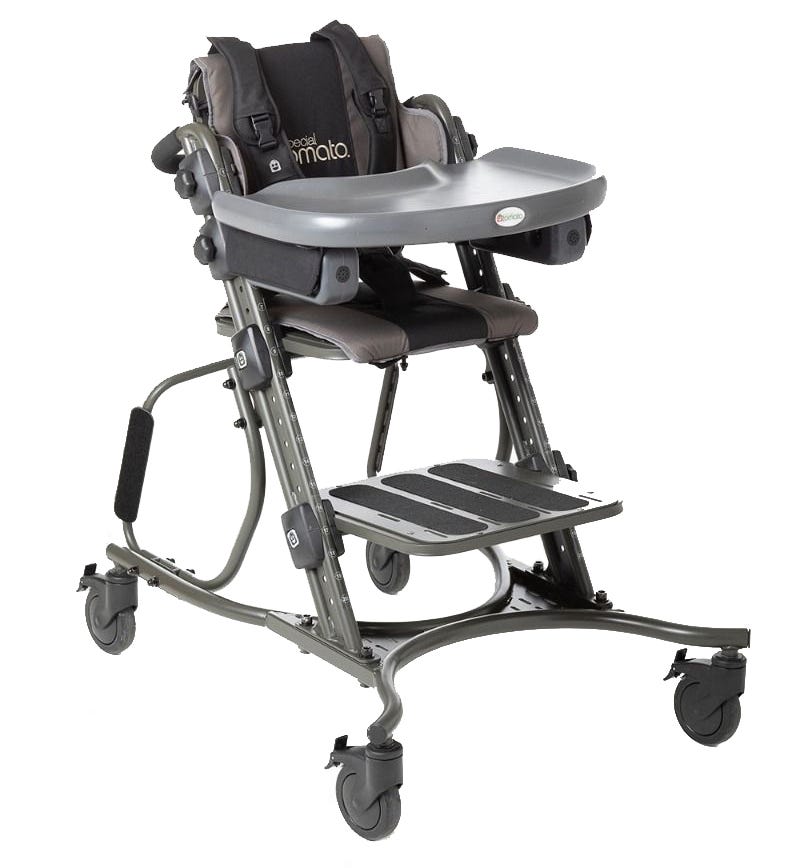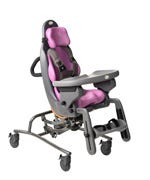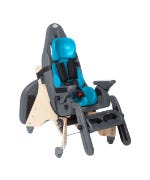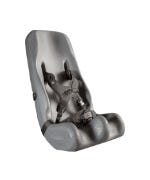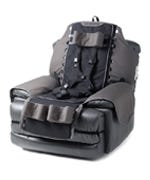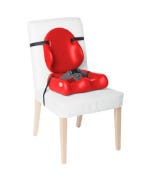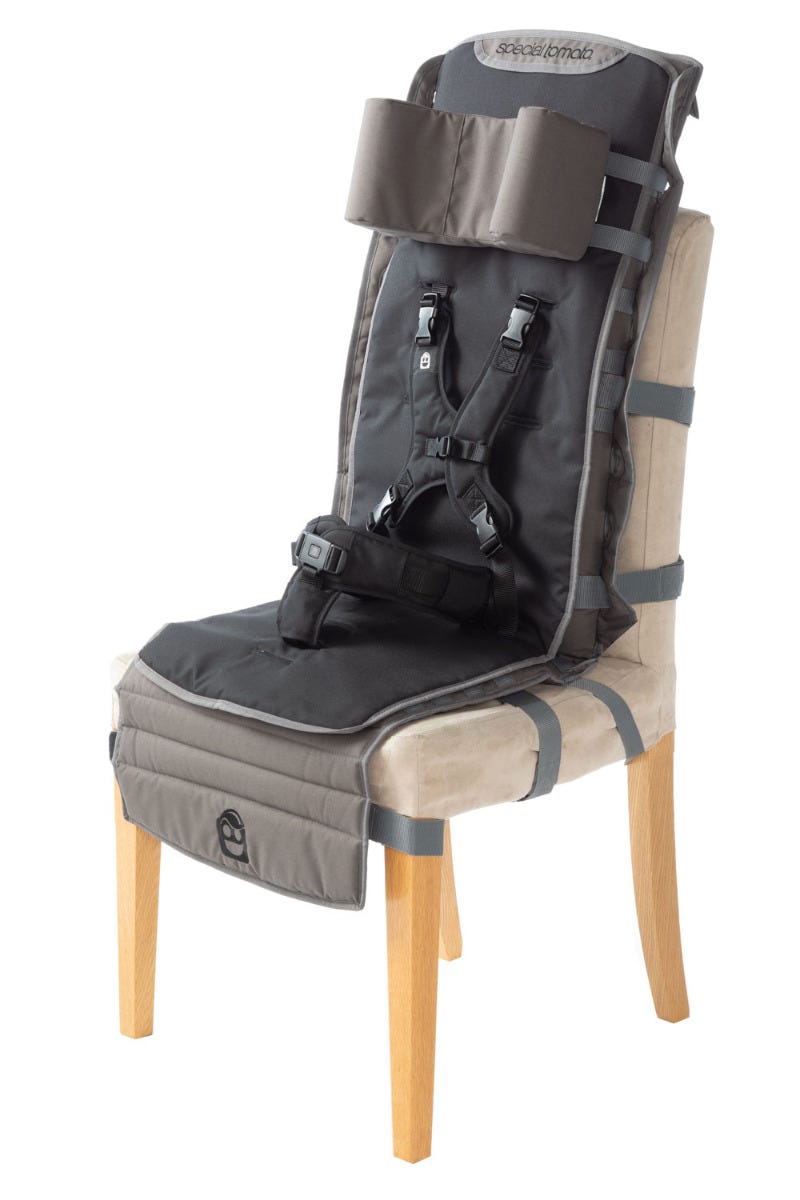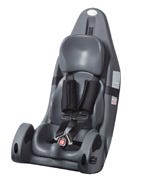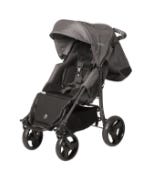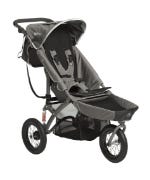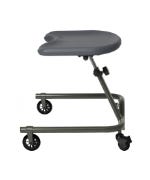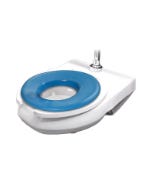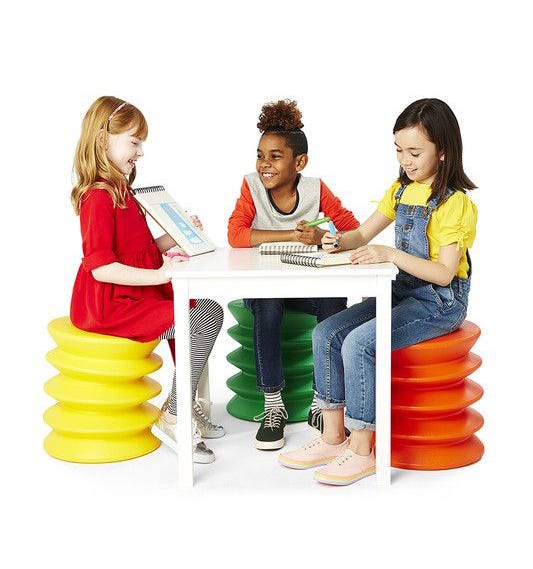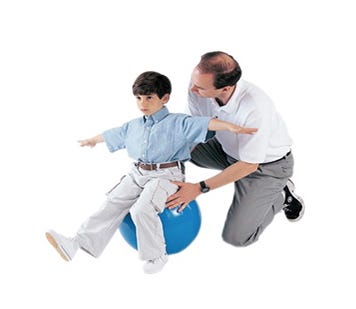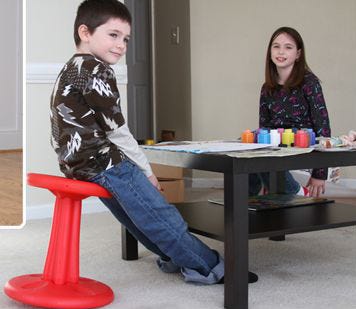How Can Active Sitting at Home Help?
Active Sitting- What is it?
Simply stated, active sitting is the exact opposite of what is experienced in a reclining lounge chair. In this type of chair, you literally do not have to move a muscle and that is why resting in one often leads to sleep. Frequent, prolonged, supported, non-moving sitting, even if you are not reclined, can lead to lots of problems- decreased strength especially of core postural muscles, general deconditioning (loss of endurance to maintain the state of being active), muscle tightness and a lack of flexibility that can lead to aches and pains, reduced blood circulation and generalized “brain fog”. Have you heard enough? If you or a person you know has special needs and begins at a place with health issues and physical limitations, this list can take on even greater significance when thinking about overall wellbeing of body and mind.
Active sitting on the other hand, is defined as sitting on a seat that allows or encourages the sitter to be active while sitting. Active sitting, also called dynamic sitting, refers to the concept that movement while sitting can be beneficial to the wellbeing of the human body and ultimately improve its ability to function. This is true for every body.
- Encourages Constant Movement- Movement requires muscle activation. Muscle activation causes increased blood flow to the muscle. When sitting on an active seat, balance comes into play and the body sways and makes micro adjustments to maintain balance. Sitting on an active seat is not like running laps, but the sitter is constantly activating muscles to stabilize their posture. This process keeps the body and mind awake and alert. Some people with special needs automatically engage in constant movement. They may have a hard time processing where their body is in space (proprioception). To compensate, their bodies stay in constant motion to give their brain necessary feedback to understand where they are. An active seat will naturally accommodate this.
- Increases Core Strength- When muscles repeatedly activate even a little bit, they become stronger. When we lean on something for support and allow our muscles to lie inactive for long periods of time, they will become weaker. Movements big and small on an active seat will strengthen core muscles. Some people with special needs have low muscle tone. Low muscle tone often causes a person to rely heavily on support to “prop up” their posture. A gradual introduction to active sitting can slowly build strength and endurance in postural muscles.
- Improves Posture- Active seats do not allow for “slumping”, the posture that causes the back to round, the pelvis to move into a posterior tilt and the head to move forward. Active seats require that you sit up, allowing the spine to move into a natural S-curve. This position also opens more room to take deeper breaths. People who are already experiencing aches and pains from poor posture report relief when they sit on active seats as they frequently shift their weight and align themselves comfortably. This motion is also important in maintaining the health of discs that provide cushioning between each of the vertebrae.
- Improves Focus and Learning- Researchers are finding that active sitting improves concentration and a person’s ability to learn. Movement and learning are processed in the same part of the brain. Movement sends oxygen up to the brain and helps you stay more alert, awake, and able to focus. Actively sitting and “working out the wiggles” is also a great way to release excess energy in a healthy way. Moving and stretching address key aspects of UDL (Universal Design for Learning), including enhancing self-regulation through stress reduction, decreasing hyperactivity, and increasing focus. This can be especially true for people who have been diagnosed with attention deficit disorders.
Types of Active Seats
- Balance Balls- One of the earliest innovations in active seating for the classroom was offering kids the opportunity to sit on a large exercise ball. Gentle rocking and bouncing on the ball with feet flat on the floor provided all the benefits of active seating. Today’s market is boasting some new ideas with products like ergoErgo Kids Stool which offer the same benefits of sitting on a balance ball but with increased stability and without your seat rolling away when you stand up! Balance Discs or Wobble Cushions placed on the seat of a standard also provide active sitting opportunities.
- Kore Stools or Wobble Chairs- are similar to their inflated counterparts above. They require balance, ensure that sitting is an active process with lots of muscle engagement and facilitate better posture than seats that offer too much support.
Hopefully, you now have a much better understanding of what active sitting is and the kinds of chairs that provide active seating. So now, back to the original question posed by the title of this article, how can active sitting at home help? Providing your child with plenty of opportunities at home to do “the work” and experience the fun of active sitting IS carrying over therapy at home! Here are some ideas.
- At mealtimes, have your child sit on a balance disc or wobble cushion.
- Provide fun colorful active seats like the ergoErgo Kids Stool or the Wobble Stool when they are watching TV or playing video games. Sure, you can play a video game, IF you sit on this fun seat!
- For older kids, using active seats at their computer desks at home or while they practice their instrument or are having fun doing a craft. It’s helping your child stay active and strong and they aren’t even aware of it. Older kids that are athletes will most likely welcome the idea of an active seat and think up ways to use it that aren’t even on your radar.
Active sitting and active seating cover a lot of ground! Providing and encouraging active sitting at home is easy and a good idea for everyone!


